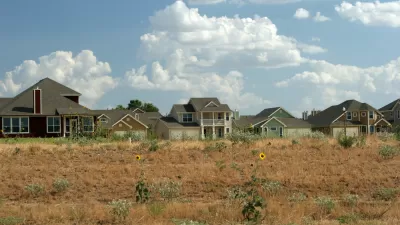This decade is likely to produce demographic news that will shock anyone born after 1850.

According to an article by Richard Fry, this decade will likely be the first since the one that began in 1850 to break this long-running trend of shrinking households. In 2010, the average U.S. household was 2.58. "In 2018 there were 2.63 people per household," writes Fry. All those figures are way down from the 5.79 people per household in 1790.
So why is American life making a shift that hasn't been witnessed since before slavery was abolished?
Households are increasing in size mathematically because the growth in the number of households is trailing population growth. The newly released data indicates that the population residing in households has grown 6% since 2010 (the smallest population growth since the 1930s), while the number of households has grown at a slower rate (4%, from 116.7 million in 2010 to 121.5 million in 2018).
According to Fry, the increasing size of households will have economic effects in the housing sector and in consumer goods like home appliances and home furnishings. "In general, it leads to a less vigorous housing sector – fewer apartment leases and home purchases, as well as less spending related to housing, such as cable company subscriptions and home accessories suppliers," according to Fry.
As for the demographic trends driving the growing American household, Fry focuses on two trends of note: a growing share of population living in multi-generational households and a growing share of Americans "doubling up" in shared living quarters.
FULL STORY: The number of people in the average U.S. household is going up for the first time in over 160 years

Alabama: Trump Terminates Settlements for Black Communities Harmed By Raw Sewage
Trump deemed the landmark civil rights agreement “illegal DEI and environmental justice policy.”

Planetizen Federal Action Tracker
A weekly monitor of how Trump’s orders and actions are impacting planners and planning in America.

The 120 Year Old Tiny Home Villages That Sheltered San Francisco’s Earthquake Refugees
More than a century ago, San Francisco mobilized to house thousands of residents displaced by the 1906 earthquake. Could their strategy offer a model for the present?

In Both Crashes and Crime, Public Transportation is Far Safer than Driving
Contrary to popular assumptions, public transportation has far lower crash and crime rates than automobile travel. For safer communities, improve and encourage transit travel.

Report: Zoning Reforms Should Complement Nashville’s Ambitious Transit Plan
Without reform, restrictive zoning codes will limit the impact of the city’s planned transit expansion and could exclude some of the residents who depend on transit the most.

Judge Orders Release of Frozen IRA, IIJA Funding
The decision is a victory for environmental groups who charged that freezing funds for critical infrastructure and disaster response programs caused “real and irreparable harm” to communities.
Urban Design for Planners 1: Software Tools
This six-course series explores essential urban design concepts using open source software and equips planners with the tools they need to participate fully in the urban design process.
Planning for Universal Design
Learn the tools for implementing Universal Design in planning regulations.
Clanton & Associates, Inc.
Jessamine County Fiscal Court
Institute for Housing and Urban Development Studies (IHS)
City of Grandview
Harvard GSD Executive Education
Toledo-Lucas County Plan Commissions
Salt Lake City
NYU Wagner Graduate School of Public Service




























